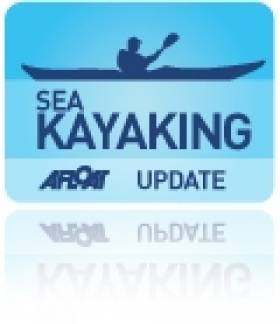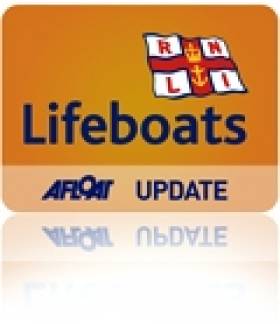Displaying items by tag: Causeway Coast
Catch the North Coast Sea Kayak Trail On TV This Sunday
#KAYAKING - Northern Ireland's new North Coast Sea Kayak Trail is set to feature on BBC TV this weekend, OutdoorNI reports.
Earlier this month, Ellie Harrison from BBC's Countryfile programme paddled the trail with local guide Robin Ruddock and also visited the Port Moon Bothy, an old cottage refurbished as a rest stop for kayakers on the trail.
"The North Coast Sea Kayak Trail will offer a completely unique way to explore the Causeway Coast and the converted bothy at Port Moon is fast becoming the most talked about and indeed most spectacular accommodation in Ireland,” said CanoeNI.
The new trail joins a host of coastal canoe routes launched this year by CanoeNI, as previously reported on Afloat.ie.
Catch the North Coast Sea Kayak Trail on Countryfile this Sunday 27 November at 6.25pm on BBC One Northern Ireland.
Portrush Prepares to Celebrate 150 Years of Lifeboat Service
Portrush Lifeboat station celebrates its 150th anniversary next September 19th. The RNLI is holding a service and celebration at the Royal Court Hotel in Portrush.
Portrush is a popular tourist destination on Northern Ireland's famous Causeway Coast. The town sits on a peninsula jutting into the Atlantic between two sandy beaches.
The town Lifeboat owes its existence to Laura, Countess of Antrim, who, in 1860, successfully petitioned the RNLI to site one of the three new lifeboats on the "iron-bound coast" of north Ireland. Financed by Lady Cotton Sheppard of Staffordshire, the new lifeboat was initially named "Zelinda" and arrived in December of that year. It was later titled "Laura, Countess of Antrim" and saved 27 lives.
Related Safety posts
RNLI Lifeboats in Ireland
Safety News
Rescue News from RNLI Lifeboats in Ireland
Coast Guard News from Ireland
Water Safety News from Ireland
Marine Casualty Investigation Board News
Marine Warnings






























































